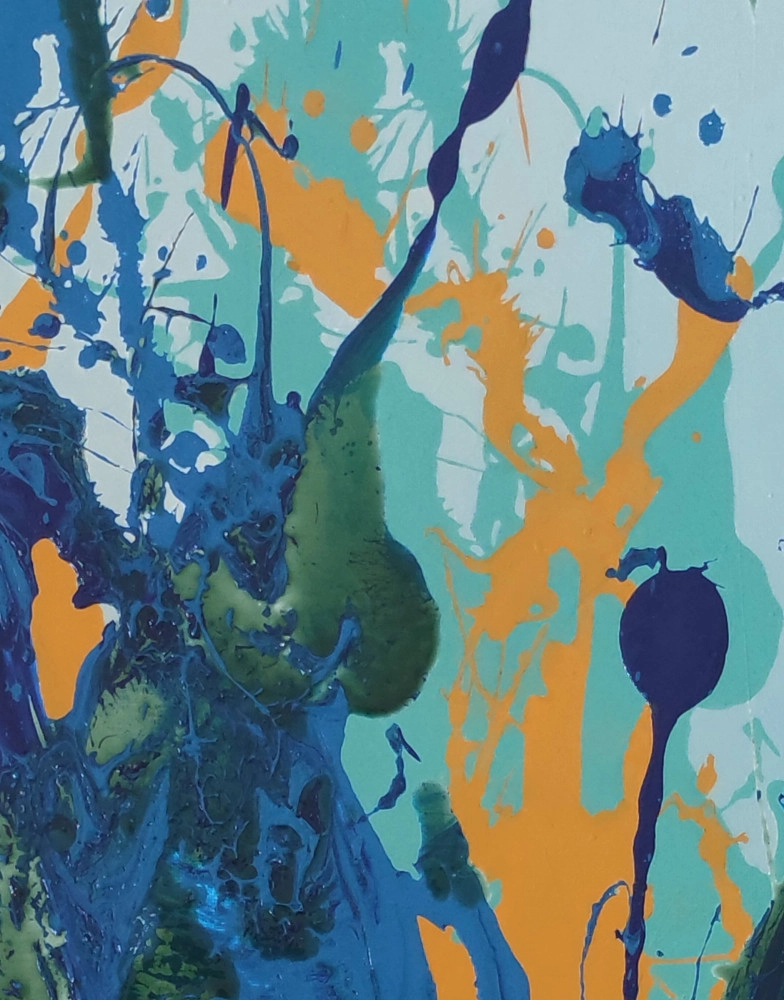
Hegedűs Alexandra
Képzőművész
Visszatekintve úgy gondolom, hogy a művészetem mindig is egyfajta vizsgálódásról, kutatásról, kísérletezésről szólt. Eleinte a világ megfigyelése és leképezése, később pedig a legkülönbözőbb anyagok és technikák felhasználása érdekelt. Ezzel párhuzamosan a művészet és az emberi észlelés kapcsolata kezdett foglalkoztatni. A látáselmélet és vizuálpszichológia terén szerzett ismereteimet a technikai kísérletezéseimmel ötvözve olyan műveket alkottam, melyeknek célja, hogy kihívás elé állítsák a nézőt. 2017-től fokozatosan elhagytam a figuratív festészetet, és olyan absztrakt műveket készítettem, melyek jórészt a szokatlanabb anyagok és a különféle technikák széles skálájának ötvözésével való kísérletezésről, egyfajta technikai burjánzásról szóltak. 2021 végén leredukáltam a technikai eszközeimet, és a figyelmem újra a vizuális észlelés és az absztrakt festészet mibenlétének kérdései felé fordult. Újabb képeim főszereplőjének a festészet klasszikus értelemben vett építőelemét, az ecsetvonást választottam. A felnagyított ecsetvonásokat egyszerű kompozíciókba tömörítem, melyek lehetőséget adnak nem csak a színek kölcsönhatásának, de a felfestett forma és a hordozó (vászon) formája közti párbeszéd vizsgálatára. A műveim fő témája azonban egy paradoxont boncolgató illúzió; az ecsetvonások nem is ecsetvonások, és a látszólagos expresszív gesztusok helyett gondosan előkészített, részletes és időigényes munkával készülnek. A tervezéshez bedigitalizált ecsetvonásokat használok, amiket beméretezés után kinyomtatok, és pengével stencilt készítek belőlük. A képeim akrilfesték, festékspray és a stencilek alkalmazásával készülnek. Korábbi technikai kísérletezéseimből megtartottam azt a speciális lakk-ragasztó-festék keveréket, mely különös felületű, vastag, mégis áttetsző rétegek létrehozására alkalmas. A “legfelső ecsetvonást” rendszerint ezzel az anyaggal készítem, egyfajta hangsúlyt adva a képen megjelenő formának. Ezen metódus eredményeképp a képeim az absztrakt festészet hagyományos – többek között létrehozásuk attitűdbeli különbségei szerint elkülönülő – fajtái (pl. geometrikus absztrakció és absztrakt expresszionizmus) közötti határokat törik át. Bizonyos esetekben az ecsetvonások olyan formákban jelennek meg, melyek egy-egy egyezményes vizuális jelet idéznek meg (pl. X, =, Ø, II, ~). Ezek a művek a vizuálpszichológia és a vizuális kommunikáció, a vizuális prekoncepciók iránti érdeklődésemet tükrözik. Vagyis hogy mi befolyásolhatja, hogy a nézőnek mit jelent, amit lát? Egy mű esetében a jelentést befolyásoló elem lehet a cím is, én azonban szeretnék a nézőimnek teret hagyni a szabad asszociációra. Így a festményeim többségét nem látom el valódi címmel, csak kóddal.























